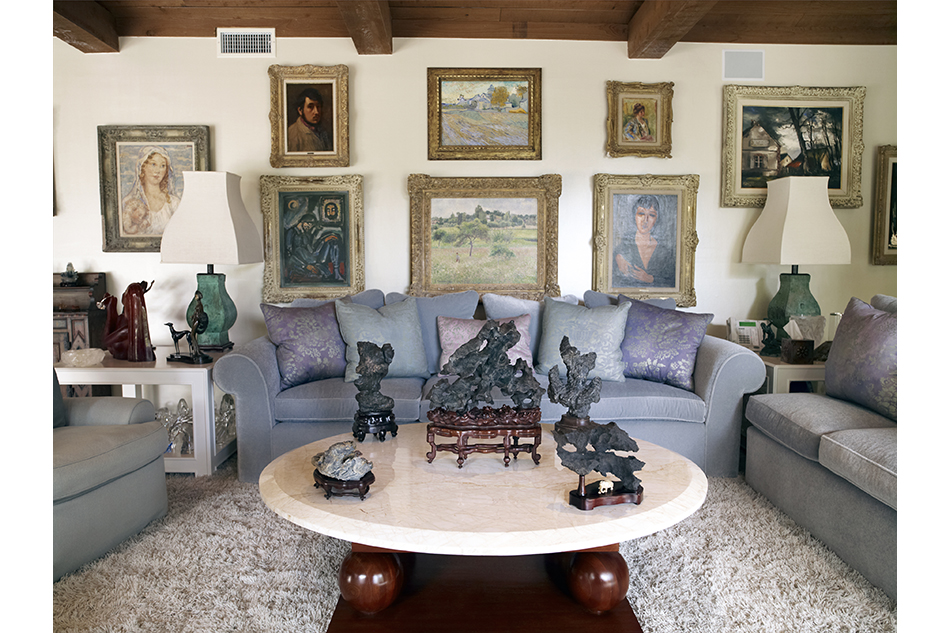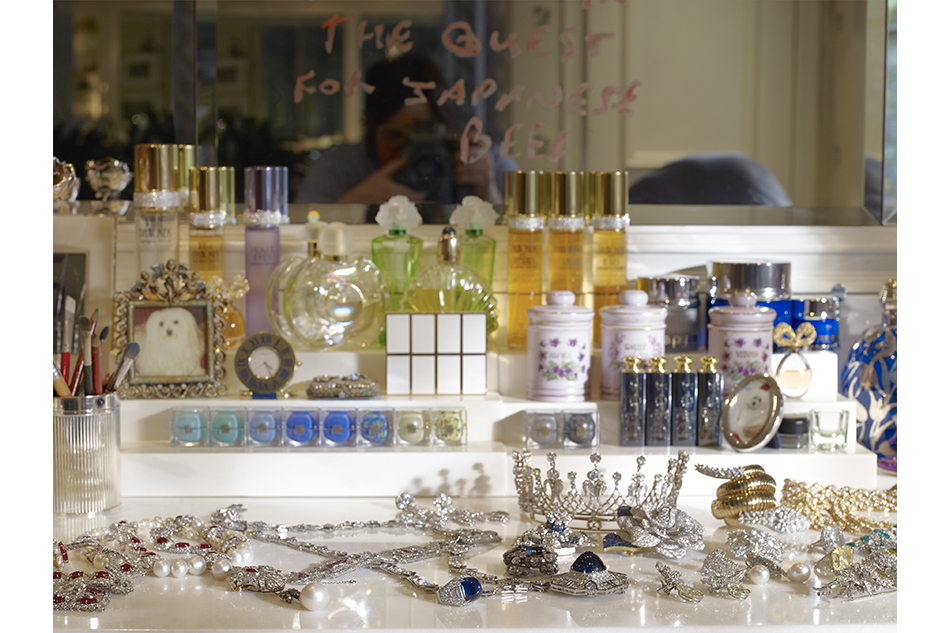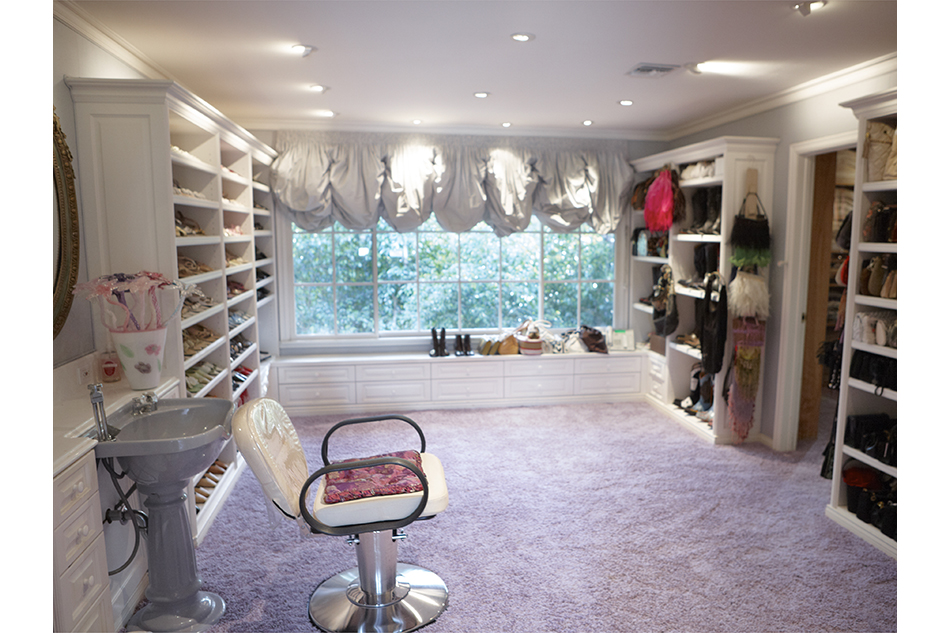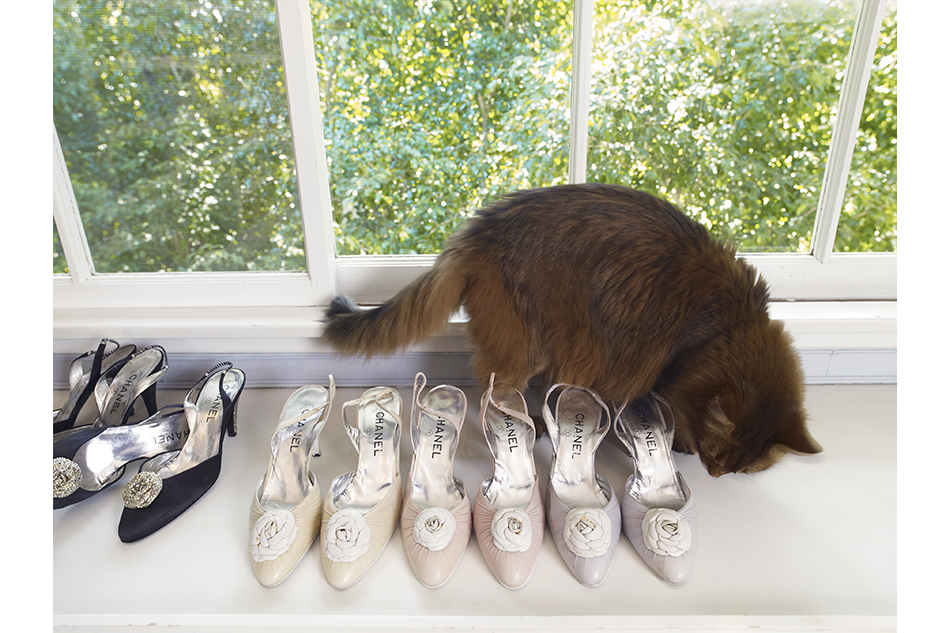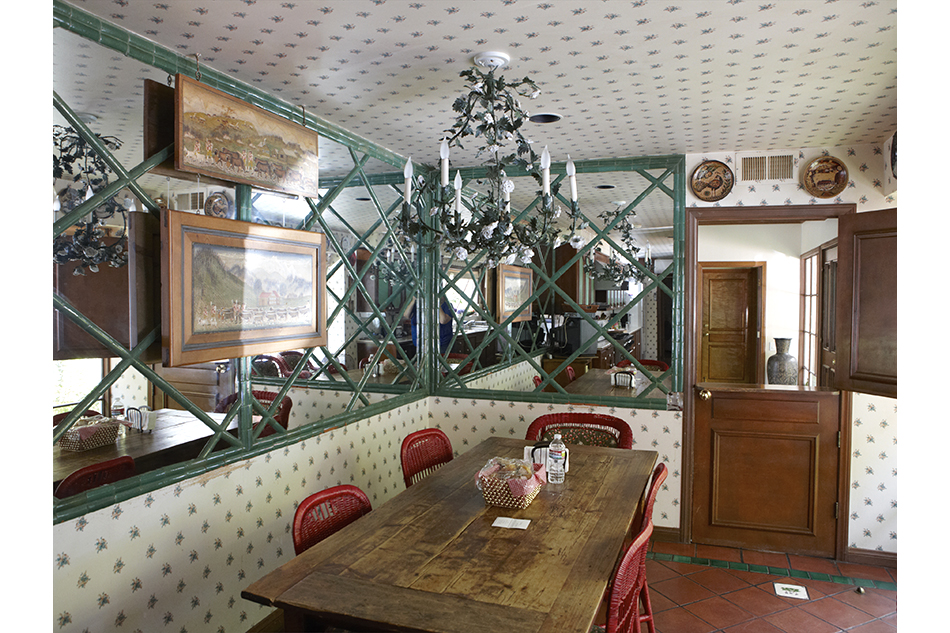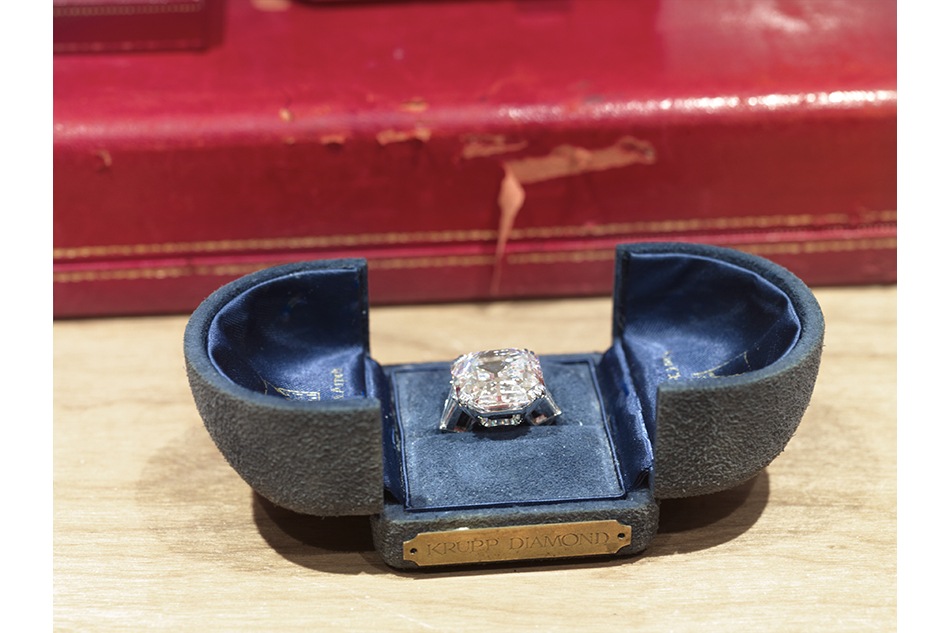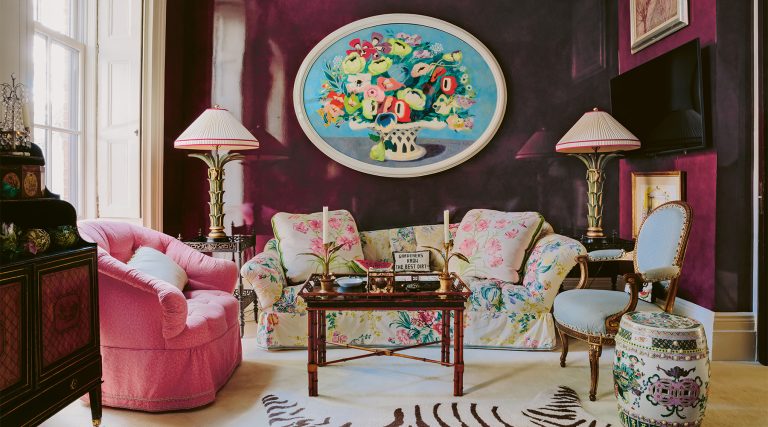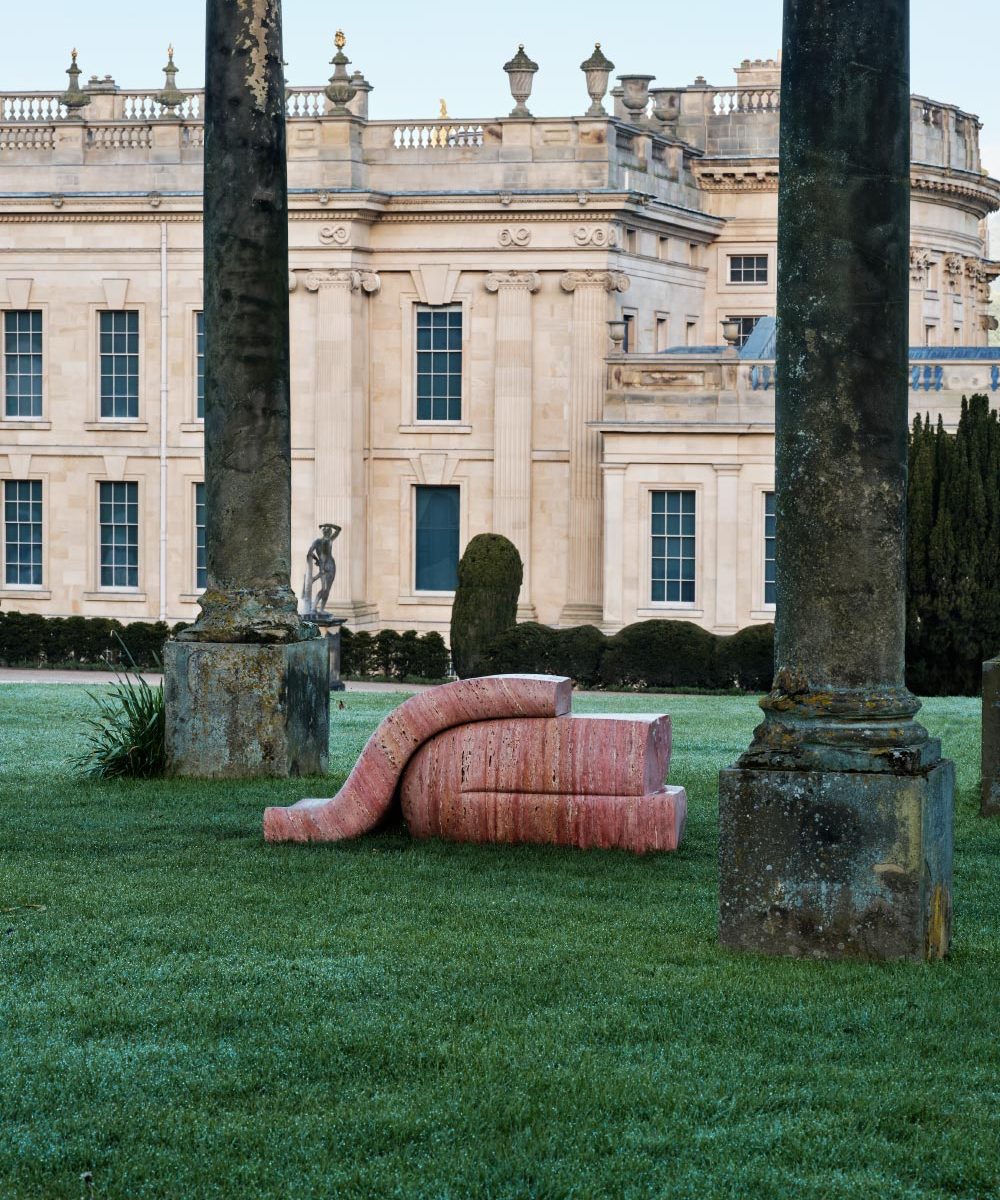
November 2, 2015The Closet #9 features in Catherine Opie’s just-published 700 Nimes Road (DelMonico Books/Prestel), her haunting portrait of the treasure-filled rooms within Elizabeth Taylor’s California home. Top: A detail of the cover shows a silhouetted Opie reflected in a Warhol Liz. All images 2010–11 © Catherine Opie, courtesy of Regen Projects, Los Angeles, and Lehmann Maupin, New York and Hong Kong
Elizabeth Taylor, she of the violet eyes and the “apocalyptic” breasts (as her two-time husband, Richard Burton, would describe them), is not the first person you would think of in connection with the American fine-art photographer Catherine Opie. Although Opie has trained her elegant and extraordinarily eclectic lens on many subjects — from tattooed leather dykes and teenage basketball players to ice-fishing houses and freeways — iconic screen sex goddesses have not been among them. But growing up in Sandusky, Ohio, Opie says in the newly published 700 Nimes Road (DelMonico Books/Prestel), she spent “a lot of windy Sundays” watching old movies. And, as she told her friend the magazine editor Ingrid Sischy, who wrote the book’s afterword, that was how she fell under the spell of the “incredible” Taylor, “even though her femininity frightened me a little bit. . . . I didn’t know what to do with that kind of ultra powerful femininity.”
Flash forward to November 2010, when Opie sought permission through Taylor’s executive assistant, Tim Mendelson — with whom she providentially shared an accountant — to create a portrait of the legendary actress and AIDS activist through her house and belongings. One of her inspirations, she says, was William Eggleston’s series of photographs of Elvis Presley’s Graceland, in Memphis, another house belonging to a mythic personality. Taylor, apparently, didn’t need to hear Opie’s credentials or inspirations. “Just do it,” she told Mendelson. So over six months, from January to June 2011, Opie went through 700 Nimes Road — a sprawling 1960s brick-and-clapboard two-story ranch house nestled on a hillside in Bel-Air — and photographed its rooms, its tabletops, its closets and cupboards using a Hasselblad H2 camera with a digital back that allowed her maximum control over the effects she was after. Although the staff treated her “like family” (she says) she never met the house’s owner, who remained bedridden and out of sight; halfway through the shoot Taylor was hospitalized and died, and many of the 3,000 photographs that Opie took are of the actress’s jewelry and clothing carefully boxed, tagged and awaiting removal by Christie’s for its record-breaking sale of her estate.

Chair and Shoes
Perhaps inevitably with such a background, there is a surreal, elegiac quality to the 129 images that are contained in the book — photographs that will also be exhibited this winter at the two venues of Lehmann Maupin, Opie’s New York gallery. (In late January in Los Angeles, the Hammer Museum and MOCA Pacific Design Center will host concurrent exhibitions of, respectively, Opie’s portraits and images from 700 Nimes Road.)
Several plates reveal a light-filled living room, its walls hung with paintings by Modigliani, Pissarro, Renoir and other masters, its white shag carpet unsullied by errant footprints, its blue damask sofas undented by the impress of human bodies — can anyone have ever lived here? Elsewhere in the house, Opie shows us a blue-and-white-papered guest bedroom, redecorated while Taylor was in the hospital, whose pellucid, expectant emptiness resembles a Hopper interior; and Taylor’s boudoir or makeup room, its carefully arranged panoply of brushes and unguents waiting in vain for their owner’s hand.
There are still lifes (or as the French would have it, natures mortes) everywhere, many with the sort of painterly antecedents one might expect from a photographer like Opie, who references Holbein and Titian in many of her portraits. “Cathy looks at the whole history of art,” says her dealer, David Maupin, “at both painting and photography, and she sets up a dialogue between them.”
On one antique chair, a pair of scuffed red Clark’s children shoes — possibly Taylor’s own or perhaps a relic of one of her children — recalls Van Gogh. Then there are Taylor’s childhood ballet slippers, shot with such high-definition clarity that every pore in the faded leather is visible; and an array of identical rosette-embellished Chanel slingbacks, in black, in cream, in pale rose, in lilac, on a windowsill, where a cat sniffs tentatively at them as if it and they were part of a Chardin composition.

AIDS Activist
Sometimes you can sense the woman who lives, or lived, here in the clusters of animal tchotchkes and photographs on shelves or tables — Richard Burton and Hillary Clinton and Taylor’s children sharing space with china, Maltese terriers and jade elephants and, in one case, the dog-eared instruction guide for the cable TV’s remote control—in the riot of color and pattern that spills out of Taylor’s clothes closets; in the tumbled blaze and sparkle of the extraordinary jewels Taylor loved and wore; and in the battered, well-thumbed leather jewelers boxes those jewels were kept in. These images suggest a woman of lavish opulence (those necklaces and tiaras, those furs and silks) and warm affections (for the friends, the children, the pets and some of the husbands). A woman like the one New Yorker critic Hilton Als, in his introduction to the book, describes as “this person, as big or as little as your screen deemed her to be, meeting the hugeness of life with a huge laugh.”
But such flesh-and-blood traces are rare, perhaps by design. In the afterword, Sischy, who herself tragically died this past July, has this to say: “I asked Opie what the hardest part of this project was. She replied, ‘Watching the house transform, and how quickly someone’s life ends up being scattered.’” In 700 Nimes Road the rooms are empty, and all that’s left is a faint whiff of some perfume (White Diamonds? Violet Eyes?), the neatly labeled jewels that once made a beautiful woman even more beautiful and — perhaps most poignant of all — a pile of unopened birthday presents.
Amanda Vaill is the author, most recently, of Hotel Florida: Truth, Love, and Death in the Spanish Civil War, which deals in part with the photographers Robert Capa and Gerda Taro.
PURCHASE THIS BOOK
or support your local bookstore

